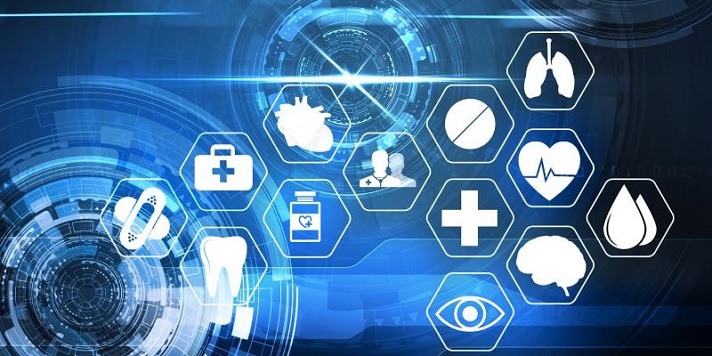The effect of the COVID-19 epidemic on health and care – is this a portent of the ‘new normal’?

The approach which differing countries have adopted has been fascinating to watch with the far east particularly South Korea and Singapore adopting very technologically advanced digital solutions towards contact tracing and also using testing very extensively. Differences in Europe have also emerged in terms of approach between countries with Germany having the highest rate of testing and the greatest number of ventilated beds (and as critically, the trained experienced workforce to support and deploy them) potentially having lower death rates as a result.
It is also becoming clearer that the effect on COVID-19 upon health and care systems goes beyond the disease it produces as health systems have to somehow contemporaneously cope with the existing levels of non-communicable diseases. This is an enormous challenge since in all too many cases, the systems cannot cope with the volume of patients needing care as a result of COVID-19, even if there were no other calls associated with cardiovascular, pulmonary and metabolic diseases and cancer.
The effect of this has varied from country to country but some patterns are emerging. For example, primary care has long held the promise that problems like access and care could be delivered digitally, but to date the scale of actual digital adoption has been disappointing, and the aspirations we have all had around digital transformation have had to be tempered by the reality of slower speeds of adoption than anticipated. This well could be changing and the 2020s could be remembered not only as the age of COVID-19 but also as the age when digital transformation started to come of age and become the mainstream solution.
History also teaches us that it is difficult to put the “genie back in the bottle” once it is released and the challenges of a diminishing and ageing workforce and consumer pressure makes it very unlikely that the post COVID-19 era will be similar to the pre COVID-19 era.
The effect of COVID-19 upon digital solutions around delivery of healthcare has been and continues to be very significant and it is accelerating as fast as COVID-19 is moving across the globe. Thus, considering this new post COVID-19 world, they can be thought of as:
- Directly associated with the epidemic
There are many lessons to be learnt from the use of technology in public health surveillance, from the linking of data in sentinel labs to the development of technological solutions to immediately link testing in various geographical locations, thus enabling insights to be drawn around spread
When it comes to the use of technology around contact tracing, some countries like South Korea have developed the use of smartphone technology to assist in better managing contacts with quite exceptional results.
From the perspective of health provision, issues like central dashboards to better manage bed and care availability within hospital settings have been shown to significantly improve efficient bed utilisation, as demonstrated by some systems in Germany.
The use of telemedicine for direct patient care for public health emergencies has been well described. A central strategy for health care surge control for patients suspected with COVID-19 is forward triage for patients before they attend emergency departments. The utilisation of a digital first approach around access could deliver this with a personalisation and consistency we could not otherwise deliver. There are plenty of examples in the US that use personalised online screening that are already delivering this.
The potential for telemedicine is only limited by our imagination. From delivering better solutions in terms of disaster planning, like a scenario where a whole health workforce is quarantined after infection or exposure and then able to be deployed digitally from home, to the better care of affected patients by dynamically being able to communicate with them remotely at scale and in real-time, irrespective of their geographic location.
- As a result of the epidemic
The post-COVID world is likely to be remembered as the time when the care of other medical interactions like the provision of primary care or the management of non-communicable diseases shifted to digital modalities as the default rather than the exception. This new post COVID-19 age is also likely to then enable all the other technologies we have been celebrating, like insights associated with AI, and the potential that 5G gives us in terms of the Internet of things to all converge in a whole variety of ways. We are seeing this happen in real-time and at a pace we could never have imagined. In England, primary care at scale has now finally started to embrace telehealth and has deployed a new digital first pathway as a route to managing streaming of care to the appropriate place. This would have been beyond the limits of the possible only a few weeks ago.
There is much we need to do. We need to incorporate appropriate and robust governance in the deployment of these new modalities and also include robust clinical decision support within our deployments as a rule rather than as an exception.
Our scope and scale of our challenges is changing. We have been encouraging the adoption of digital transformation and this needs to continue. We also now need to assist our members in managing the complexities of governance and clinical decision support.
The other significant change we can already see accelerating is the adoption of precision health both in more personalised and predictive public health, but also in utilising digital technology in empowering people to better self-manage in non-communicable disease.
Furthermore, we need to understand that this new health and care world will look very different to the world we have been used to, but the likelihood is that by adoption of these new digital modalities in the care of people we can get closer to delivering what is our mission at HIMSS, the delivery of better care to everyone, everywhere.


